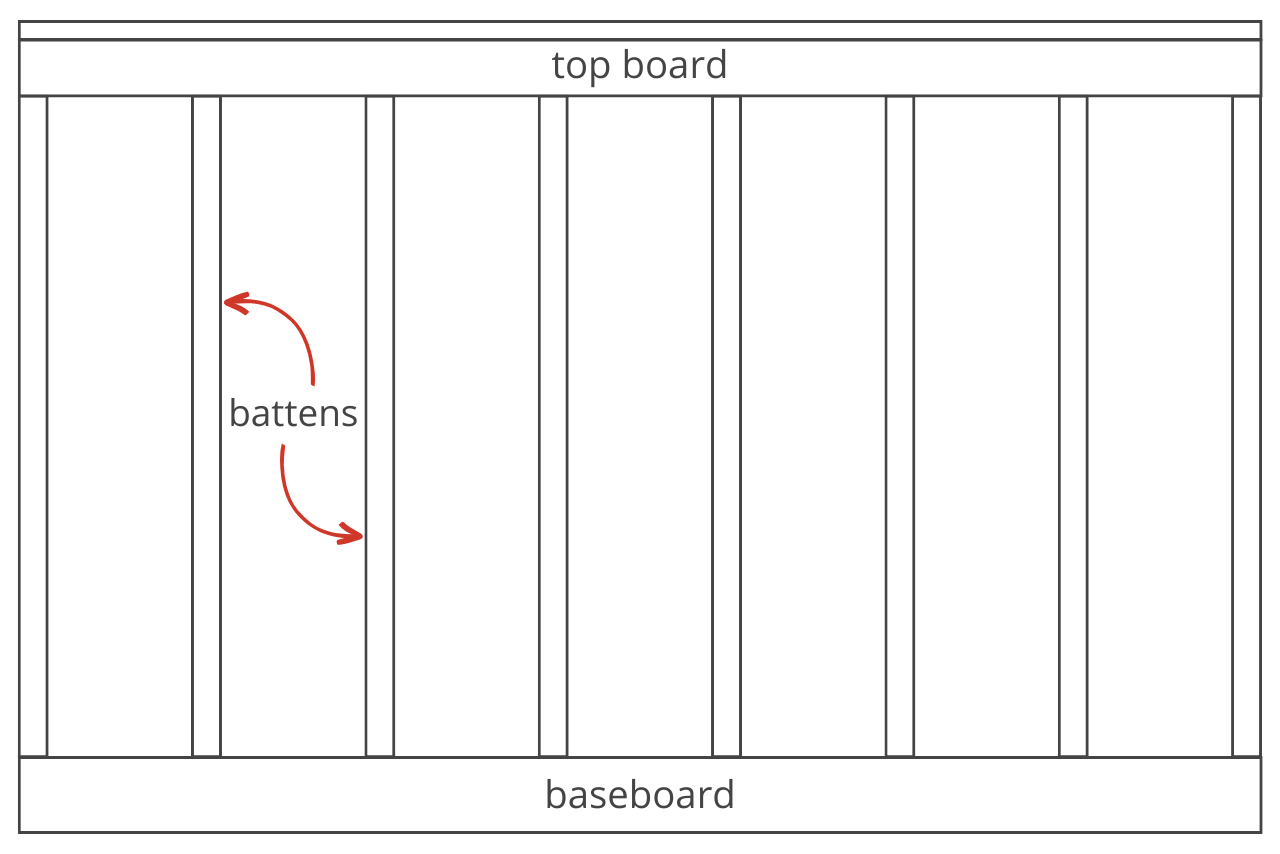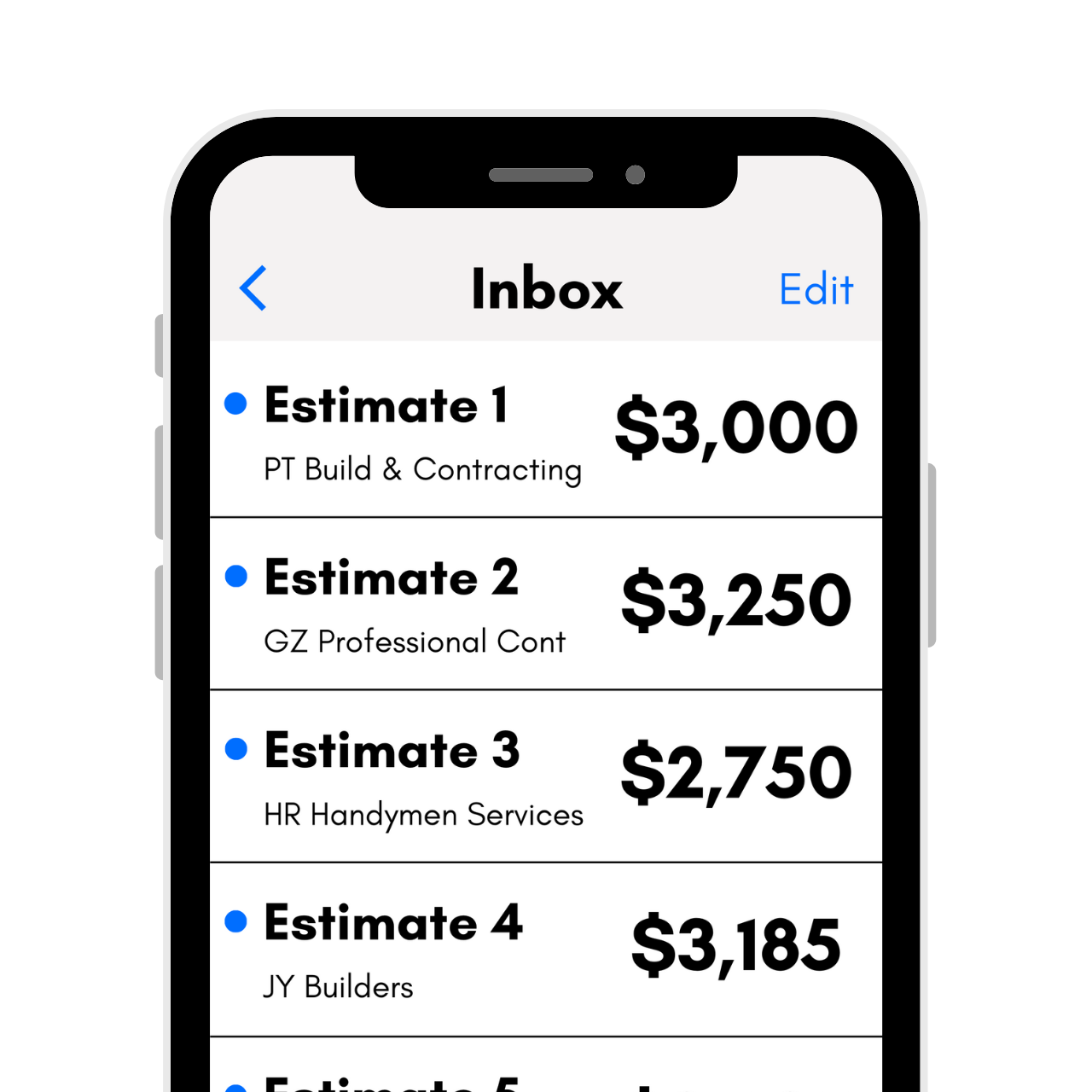Board and Batten Layout Calculator
Use our board and batten layout calculator to determine an even batten spacing and find how many battens you’ll need for a wall.
Provide an approximate space between battens to calculate the closest exact spacing.
Provide the number of battens you want on the wall to calculate the spacing between them.
Layout Using Space Between:
Dimensions
| Battens Required: | |
| Space Between: |
Layout Drawing
Batten Locations
Dimensions
| Battens Required: | |
| Space Between: |
Layout Drawing
Batten Locations
On this page:
How to Lay Out a Board and Batten Wall
Board and batten walls and siding are some of the oldest wall finishing methods in the U.S. When sawmills began operating, it was common for boards to be milled into long, wide planks, which could be installed vertically to cover the exterior walls of early homes. Because this style of wall is not weathertight, thin strips of wood, known as battens, were installed over the spaces between the boards.
Today, board and batten siding is still a popular method for finishing a house exterior, and it’s also a great way to dress up a wall and is much simpler to install than wainscoting panels.
You can lay out a board and batten wall to find the exact spacing between battens in a few easy steps. But first, let’s go over some important terminology used when describing board and batten paneling.
Battens are vertical strips affixed to the wall and are most often wood, but you can use PVC or other materials as well. They traditionally measure 1″ wide by 1″ thick.
While originally, the boards were separate pieces placed vertically on the wall, today, faux board and batten can be created on the wall with the “boards” being the empty spaces between the vertical strips. This gives the illusion that the wall is finished with true board and batten siding.
You can adhere the battens directly to your drywall or install an MDF, wood, or plywood panel on the wall first, then apply the battens to this to get the look.
When using board and batten on a wall, most often, you’ll also add a baseboard and top board. The baseboard is a board laid horizontally along the floor, and the top board is laid horizontally above the battens to frame them in.
You may also consider adding a chair rail, which is another piece of trim molding that sits above the top rail and extends a bit beyond.
Alternatively, you may choose to extend the faux board and batten wall from floor to ceiling as well.

Now let’s go over the steps to lay out a board and batten wall and achieve an even spacing between each batten without having an uneven gap on either end.
Step One: Measure Each Wall
The first step is to measure the width of each wall in inches using a tape measure. If you have measurements in feet, then convert them to inches.
Step Two: Determine Your Preferred Spacing
Now you’ll want to plan your preferred or ideal spacing between each batten on the wall. This is likely not going to be the final, precise spacing, but it will give you a target to shoot for.
The most common spacing is 10 to 12 inches apart, but you can space the battens as close or far apart as you like.
Step Three: Determine the Exact Spacing
Now that you have an idea of how far apart you’d like the battens, it’s time to figure out what will work with your wall and material choices. The easiest way to do this is to determine the width of the battens and the preferred space between them and figure out how many will fit on the wall.
Find the Width of Batten and Preferred Space
Start by adding the width of one batten to the preferred space between them to get the width of the batten and the adjacent space.
batten & space width = batten width + space width
Find the Remaining Wall Width
Then, subtract the width of one batten from the width of the wall. This is necessary to account for the first batten on the wall.
remaining width = wall width – batten width
Find the Number of Spaces
Next, divide the remaining wall width by the overall board and batten width to get an idea of how many battens and spaces you’ll need.
total spaces = remaining width ÷ batten & space
If the result is an even whole number, then you’re done, the spacing you chose will work perfectly! But, if the result has a decimal portion, then there are a few more things to do to find a spacing that will not leave a larger or smaller gap on the end.
To do this, round the result to the nearest whole number to find the total number of spaces on the wall.
Find the Width of Batten and Exact Space
Then, divide the remaining width by the total number of spaces on the wall to find the width of the space and adjacent batten.
batten & space width = remaining width ÷ total spaces
Find the Width of the Exact Space
Finally, subtract the width of the batten from this to find the precise width of the space.
exact space = batten & space width – batten width
Of course, the layout calculator above takes care of all of this to quickly find the perfect spacing and save considerable time.
Frequently Asked Questions
What kind of wood is used for board and batten?
For an indoor, faux board and batten wall, any wood will work. If you’re painting it, you may look for materials that accept paint well, such as poplar, maple, or pine. If you’re staining it, then you may want to look for a wood that will achieve the desired finish when stained.
For outdoor board and batten siding applications, cedar is the most common and preferred, but pine may also be used. PVC is also an excellent choice since it will not rot.
How thick should wood be for board and batten?
Traditional board and batten boards were 1″ thick, as were the battens. This is still standard for most exterior applications, but some newer materials including fiber cement and vinyl may be thinner.
Do you need plywood under board and batten?
For an exterior application, yes, the home should be fully framed, wrapped, and sheathed. For an interior faux board and batten wall, you can use plywood or MDF, or you can attach the battens directly to the drywall.



